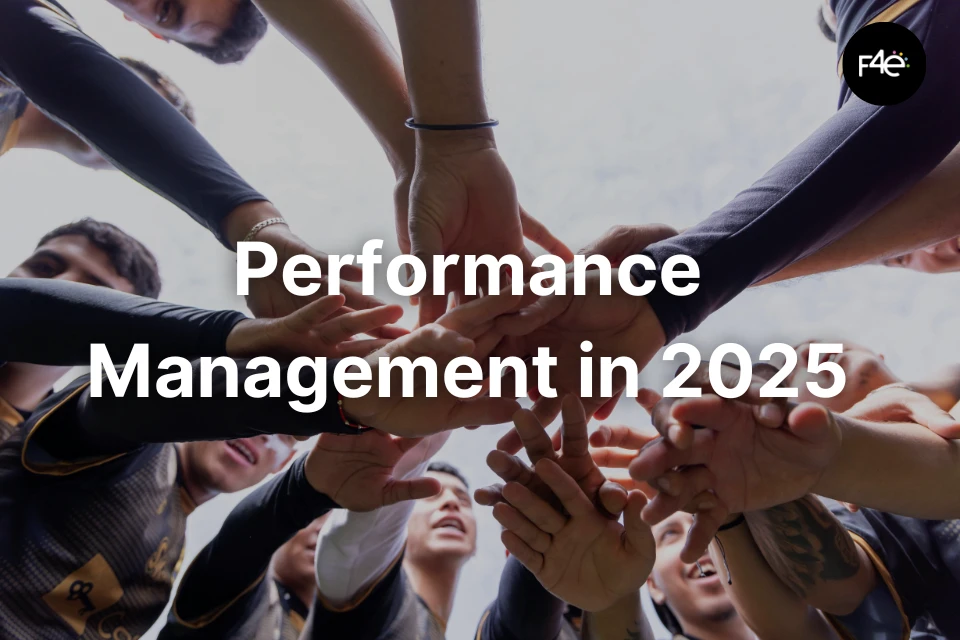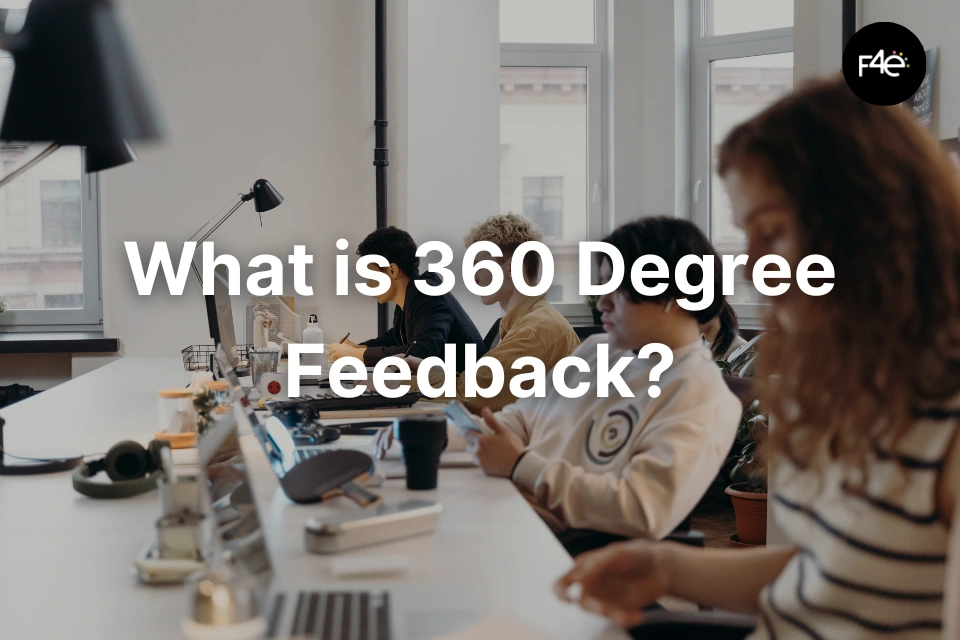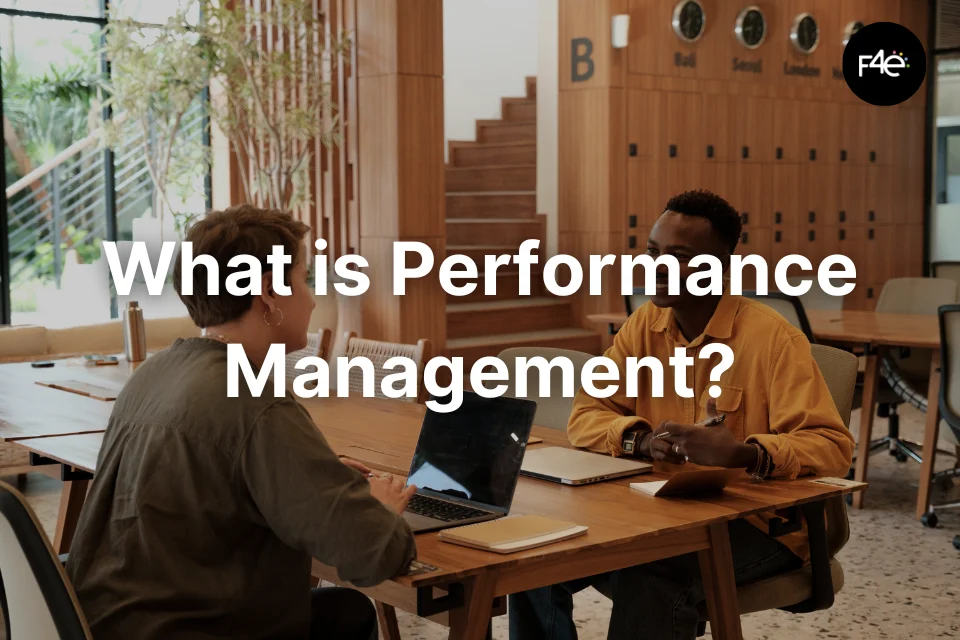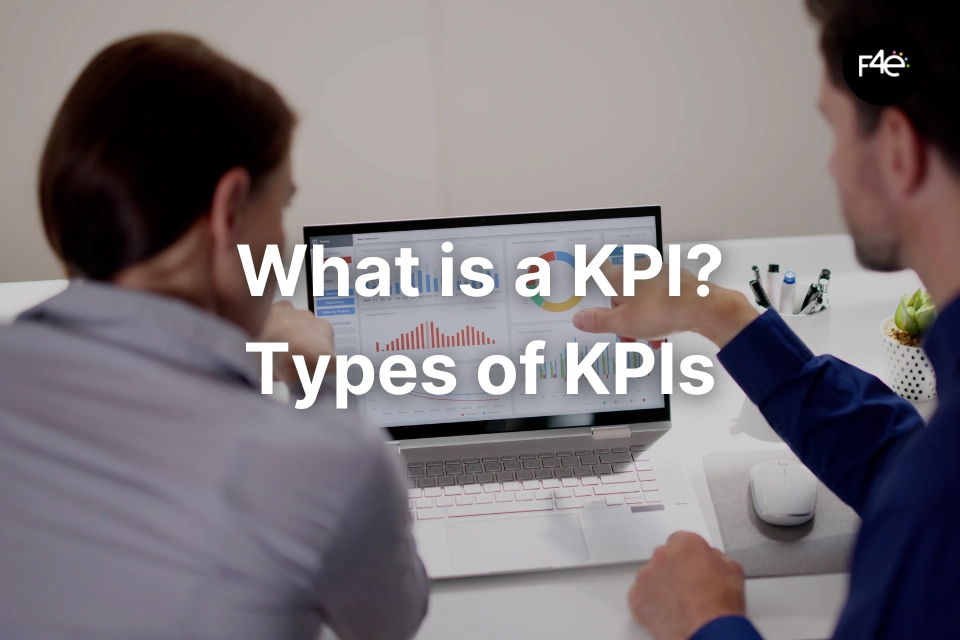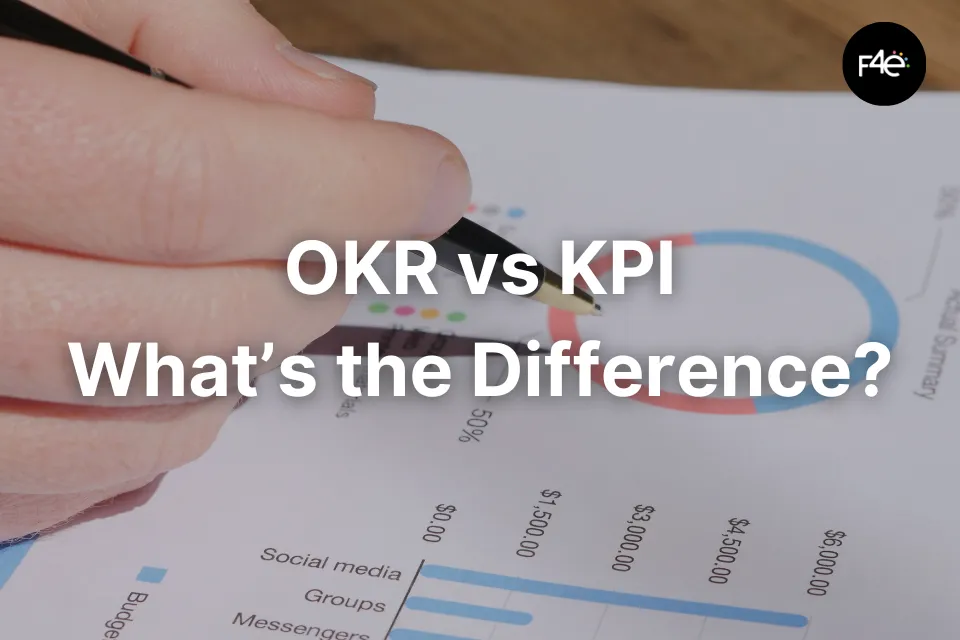In 2025, performance management isn’t just about appraisals or metrics — it’s about building systems that support long-term performance without burnout.
This article breaks down the practices that actually drive sustainable high performance: feedback, psychological safety, goal alignment, and leadership behaviors.
It’s grounded in data from Culture Amp’s research and real-world results from F4e customers.
If you’re rethinking how your organization manages performance, this is where to start.
What Is Sustainable High Performance — And Why Does It Matter Now?
For a long time, high performance at work was treated like a personal trait — something you either had or you didn’t. Top performers were singled out, celebrated, and often pushed to deliver even more. But new data paints a different picture. Sustained high performance isn’t about personal brilliance. It’s about context. It’s about systems. And more often than not, it’s about teams.
In 2025, the pressure to perform is as high as ever, but the way performance is being managed hasn’t kept pace. According to Culture Amp, only 2% of employees can maintain high performance across multiple cycles. Meanwhile, 83% never receive a high performance rating at all. These aren’t problems of individual talent. They’re signs that the systems we use to evaluate and support performance are outdated — built for a slower, more predictable world.
Organizations still focused on squeezing more output from fewer people are hitting diminishing returns. Burnout alone is costing employers between $4,000 and $21,000 per employee per year, not to mention the hidden cost of disengagement, turnover, and stagnation. On the other hand, companies that invest in structured performance management practices are 4.2x more likely to outperform their competitors, with 30% higher revenue growth and lower attrition.
At F4e, we’ve seen this shift firsthand. Our clients aren’t just looking for performance reviews — they want a system that helps people grow, feel valued, and stay aligned with business outcomes. That’s why our approach to performance management starts with structure, supports feedback and goals, and treats performance as a team outcome, not an individual race. If you’re rethinking how your organization supports high performance, it may be time to see how F4e enables sustainable performance from day one — not just at review time.
How Does Psychological Safety Affect Long-Term Performance?
You can’t ask people to do their best work in an environment where they don’t feel safe to speak up, take risks, or admit mistakes. That’s what psychological safety is about — and it’s proving to be one of the most critical ingredients for sustainable high performance.
According to Culture Amp, employees who consistently perform at a high level score 9% higher on feeling safe to take risks and 15% higher on feeling that their opinions are valued, compared to peers whose performance ratings declined. These aren’t soft metrics. They’re predictors of whether someone can sustain their performance over time without burning out or disengaging.
At F4e, we’ve built tools that help teams put psychological safety into practice. From structured 1:1s to confidential 360° feedback, we make it easier for employees to express themselves and for managers to actually listen. Creating a psychologically safe workplace isn’t about slogans or open-door policies — it’s about the systems that support trust and transparency every day. You can learn more about how we approach this in our feedback and competency tools, designed to promote meaningful conversations — not just evaluation forms.
Psychological safety doesn’t guarantee high performance, but its absence almost guarantees you won’t get there — at least not for long.
What Role Does Feedback Really Play in Employee Growth?
When performance dips, most companies look at the employee. Few stop to examine whether the environment has given that person the guidance they actually needed. That’s where feedback comes in — not as an HR formality, but as a foundational part of growth.
Culture Amp’s data shows that high performers are 83% satisfied with the feedback they receive, compared to 71% of their lower-performing peers. Over time, feedback quality is a stronger predictor of performance than past ratings. In other words, people grow when they’re given something real to grow from.
But effective feedback doesn’t just happen. It requires structure, timing, and relevance — all things traditional annual reviews tend to lack. At F4e, we make continuous feedback a core part of performance management, not an afterthought. Our platform encourages managers to deliver timely, actionable input and helps teams track how that input translates into progress.
And feedback without recognition can feel empty. That’s why we also make it easy to turn feedback into moments of recognition — not just when someone hits a target, but when they show the behaviors that build a strong team.
Done right, feedback is more than a message. It’s momentum.
This isn’t just theory — we’ve seen it in practice.
Take FLO Group, one of Turkey’s largest retail companies. Using F4e’s AI-supported feedback tools and a peer-to-peer recognition system, they boosted employee satisfaction and performance by 12%, and cut turnover by 8%. Their managers saved time, gave more targeted feedback, and built a culture where appreciation had real value.
When feedback is structured and visible, performance doesn’t just improve — it scales.
Why Engagement and Performance Are Not Trade-offs
There’s a persistent belief in some corners of leadership that employee engagement is a nice-to-have — something you focus on when business is going well, but not when you need to drive results. The data tells a very different story.
Culture Amp found that companies in the top 25% for engagement had significantly more high-performing employees than those in the bottom 25%. And it’s not just correlation. Engagement and performance reinforce each other. High performers tend to be more engaged, yes — but more engaged employees are also more likely to become high performers. It’s a feedback loop that works both ways.
The problem is, many organizations treat engagement and performance as if they’re competing priorities. They aren’t. The real challenge is creating alignment — helping individuals see how their work connects to meaningful outcomes and where they’re going next.
That’s why we’ve designed F4e to support both sides of the equation. Our platform helps teams set clear, motivating goals that don’t just track outputs but also reinforce a sense of progress and purpose. By giving people ownership of their work and visibility into how it matters, we help organizations turn engagement into action. You can see how this works in practice through our goal-setting module, which makes alignment something people understand — not something they’re told.
When engagement is built into how work happens, performance becomes the outcome — not the struggle.
How Should Companies Rethink Goal Setting in 2025?
The way we set goals says a lot about how we treat performance. Too often, goals are static checkboxes or top-down mandates, disconnected from what people are actually doing. But the companies seeing results in 2025 are doing things differently: they’re making goal setting a dynamic, transparent, and collaborative process.
In Culture Amp’s research, high-performing employees were 21% more likely to align their goals with company-wide objectives, and 26% more likely to actively create those goals themselves. That level of ownership matters. When people understand how their work ties into broader strategy — and when they help define what success looks like — performance becomes a shared responsibility, not just a personal target.
At F4e, we’ve embraced this shift by helping organizations build clarity into their goal-setting practices without overwhelming teams with complexity. Our platform supports both team-wide and individual goals, with built-in tools for tracking progress, updating targets, and adapting priorities as things evolve. And for those exploring structured goal frameworks, we break down how OKRs work in practice — not as a buzzword, but as a simple way to create focus without micromanagement.
Good goals don’t just measure performance. They shape it.
What Makes a Leader a Performance Multiplier?
Not all performance is personal. A huge portion of it is environmental — and leaders are a big part of that environment. The data makes this clear: employees working under high-performing leaders are 4.5 times more likely to be high performers themselves. That’s not a coincidence. It’s a pattern.
Culture Amp’s research shows that the best leaders don’t just drive output. They model feedback behaviors, protect their teams from burnout, and foster clarity. In fact, when managers consistently give effective feedback, their team members are 19.7 times more likely to do the same. The leader sets the pace — whether intentionally or not.
But being a great leader in today’s environment isn’t just about charisma or experience. It’s about adaptability and clarity — knowing when to direct, when to support, and how to set expectations that drive the right kind of progress. As we explored earlier, clarity in goal setting fuels both performance and engagement — and it starts with the systems leaders use every day.
That’s why we help managers at F4e choose the right tools for the right situations. Whether you’re focusing on strategic objectives or operational benchmarks, understanding the difference between OKRs and KPIs helps leaders set expectations that are both grounded and aspirational.
Great leadership isn’t magic. It’s discipline — paired with the right tools.
Are We Treating Performance as a Team Effort or a Solo Race?
One of the most persistent mistakes in performance management is acting like success belongs to a few exceptional individuals. But performance isn’t a sprint — it’s a series of cycles. And no one leads every leg of the race.
Culture Amp’s data shows just how cyclical performance really is. Employees naturally move in and out of high-performance phases — and that’s not a flaw. It’s human. But when companies ignore this reality, they create cultures where stepping back is seen as failure, not recovery.
High-performing organizations recognize this pattern and plan for it. They build teams, not just stars. The analogy of the peloton from cycling fits: the lead rider breaks the wind, but that role rotates. Everyone has moments at the front — and moments to recharge.
Sports, aviation, emergency response, and elite military teams have all embraced this logic. Business should, too.
At F4e, we design for teams. Our platform supports not just individual growth but also team-level tracking, shared accountability, and collaborative goal structures. By recognizing that performance is a collective outcome, not a personal trait, companies can create resilience — and results — that actually last.
Because in 2025, sustainable high performance doesn’t look like burnout. It looks like a team that knows how to carry each other.
What Should Companies Do Differently Starting Today?
The research is clear — but change only matters if it’s actionable. So what can companies actually do to build a culture of sustainable high performance?
Start with onboarding. Employees who feel like they’re in the right role during onboarding are 48% more likely to become high performers. This isn’t about perks or welcome kits. It’s about alignment. Do new hires understand their role? Their goals? The team they’re part of? Early clarity drives long-term contribution.
Make feedback a habit, not a formality. As highlighted earlier, feedback doesn’t just respond to performance — it shapes it. When delivered consistently and with care, it becomes one of the strongest predictors of future growth. Companies should focus on making feedback timely, two-way, and actionable — not just something triggered by reviews or setbacks.
Give leaders the tools to lead. Leadership isn’t just about being responsible for results. It’s about creating the conditions in which others can succeed. That means supporting managers with insights, context, and space to focus on their teams — not just their tasks.
Prioritize clarity over pressure. Too many companies confuse urgency with direction. Clear goals, shared expectations, and open communication reduce anxiety and build focus. That’s the kind of environment where performance thrives.
At F4e, we help organizations operationalize these ideas. From onboarding frameworks and goal-setting tools to real-time feedback systems and leadership support, we provide the infrastructure teams need to perform without burning out. When you treat performance as a system — not a sprint — everything starts to work better.
Closing Thoughts: Performance Is Not a Trait — It’s a System
If there’s one thing the data makes clear, it’s this: high performance isn’t a rare talent. It’s a reflection of the environment — shaped by systems that combine leadership, psychological safety, and feedback. As explored throughout this article, these are the conditions under which performance isn’t just sparked — it’s sustained.
In a time when the demands on organizations are rising and employee expectations are shifting, companies can’t afford to rely on outdated performance models. The world of work in 2025 requires a smarter, more human approach — one that balances ambition with sustainability, and accountability with support.
At F4e, we design for teams. Our platform helps organizations shift away from “hero cultures” by enabling team-based feedback, goal-sharing, and performance tracking. It builds on what we’ve discussed — that performance isn’t fixed or solitary, but a shared and evolving effort.
Sources and Further Reading
This article draws on insights from The Science of Sustainable High Performance, 2025 — a report by Culture Amp based on data from over 567,000 employees across 1,500+ companies. We thank their team for helping raise the standard of what performance management can be.

